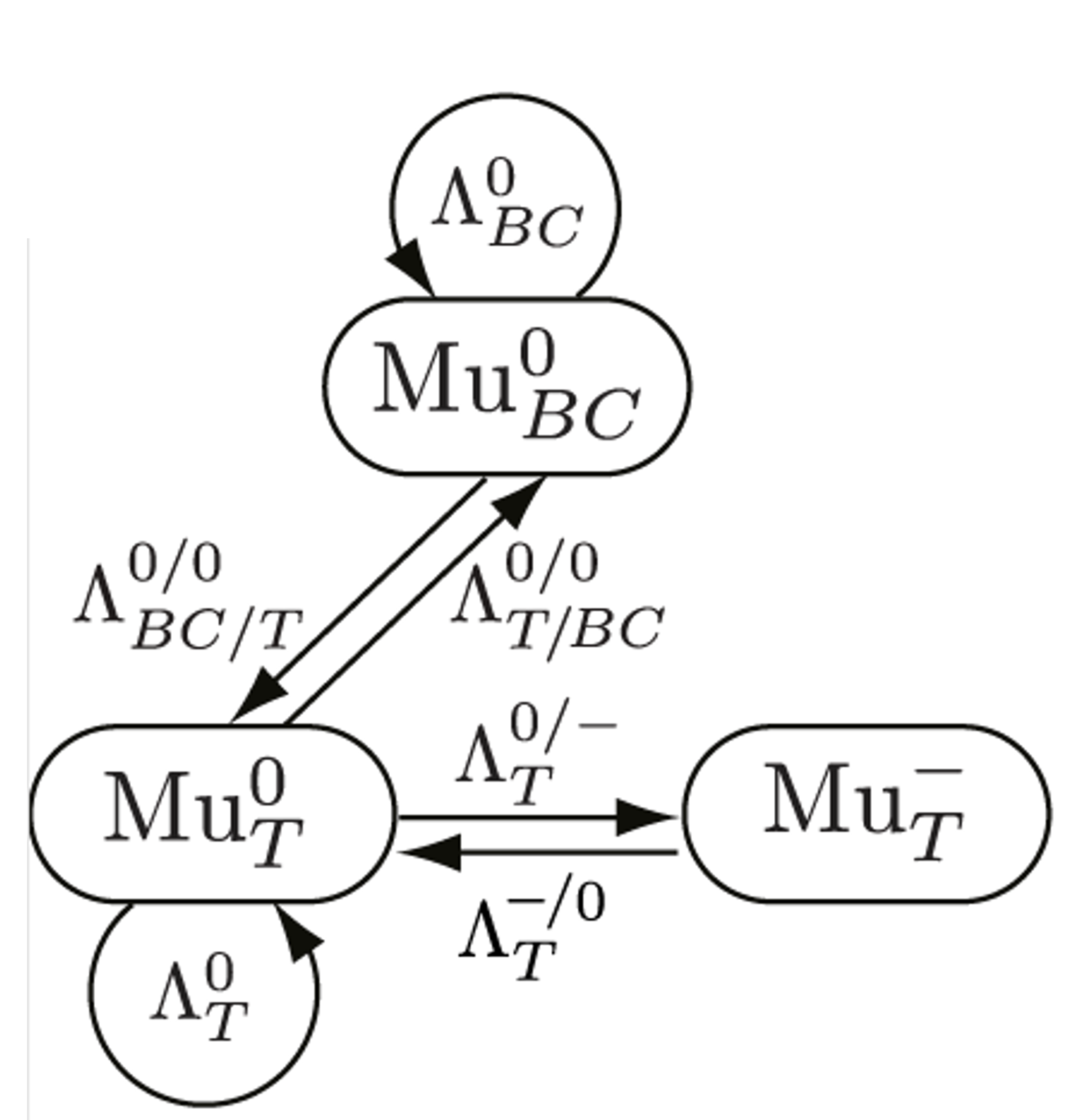Muonium, a bound state of a positively charged muon and an electron, is analogous to hydrogen, making it an important probe to understand the behaviour of hydrogen atoms in semiconductors. In semiconductor engineering processes, hydrogen is a ubiquitous impurity often plays a key role in determining a material's characteristics. However, because of its fast diffusion and high reactivity, there are only a few experimental methods available to study its behaviour in these materials, including muon spin spectroscopy.
In this paper, published in Physical Review Research, the scientists studied the muonium behaviour in GaAs. This identified which muonium states are present in the material, how they dynamically exchange their states, and how they interact with charge carriers. “We built a model that was then used to numerically simulate the muon data," explains lead author and ISIS instrument scientist, Koji Yokoyama. “This way, we could deconvolute the muon time spectrum and track down the underlying mechanisms, for example which muonium state is contributing to a specific muon spin relaxation."
 To verify and complete their model, they used the laser on the HiFi muon instrument to carry out photo-µSR measurements, where excess charge carriers are optically created in the material. They then measured the muonium interaction with minority carriers. Their laser power-dependent measurements confirmed the model's accuracy.
To verify and complete their model, they used the laser on the HiFi muon instrument to carry out photo-µSR measurements, where excess charge carriers are optically created in the material. They then measured the muonium interaction with minority carriers. Their laser power-dependent measurements confirmed the model's accuracy.
The methodology and results established in this paper have great potential for advancing the understanding of muonium's, and hence hydrogen's, dynamics in not only GaAs, but also in other semiconductor materials.
The figure, right, shows the model of Mu state exchange in 𝑛-GaAs. A superscript and subscript of Λ indicate the charge state and Mu site respectively, with a slash between before and after a transition.
The full paper can be found at DOI: 10.1103/PhysRevResearch.6.033140
